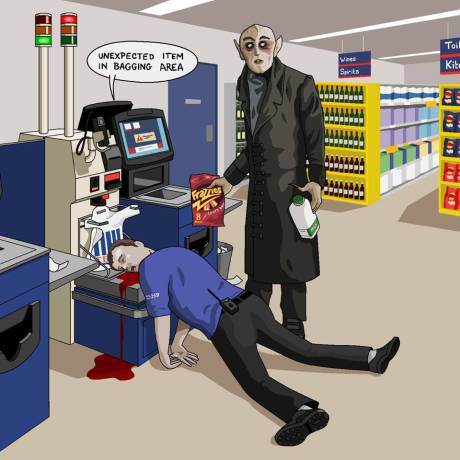 Originally posted on Vampire Syndrome Blog:
Originally posted on Vampire Syndrome Blog:
Most of you are at least a little familiar with Count Orlok, the vampire in the 1922 film “Nosferatu”, which forever changed the face of cinema.
 The story itself may have been an unauthorized version of Bram Stoker’s 1897 novel “Dracula”, but “Nosferatu” revolutionized the visual art of cinema. The now-classic “burn-up-in-sunlight” trope started with this film. Count Orlok’s sun-ray immolation is just one of the great, ground-breaking visual effects featured.
The story itself may have been an unauthorized version of Bram Stoker’s 1897 novel “Dracula”, but “Nosferatu” revolutionized the visual art of cinema. The now-classic “burn-up-in-sunlight” trope started with this film. Count Orlok’s sun-ray immolation is just one of the great, ground-breaking visual effects featured.
Count Orlok himself is, of course, another bold visual statement. What many may not realize is that Nosferatu’s director, F.W. Murnau, intended Count Orlok as a return to the hideous monsters of original vampire folklore, as they were two centuries before Nosferatu’s release.
From TVTropes’ “Looks Like Orlok” page:
History time: In the original folklore, most vampires were short, ugly, Eastern European peasants. Then (in 1819) Polidori creates the character of Lord Ruthven and suddenly they’re all elegant…
View original 608 more words


Published on July 12, 2015 03:40
